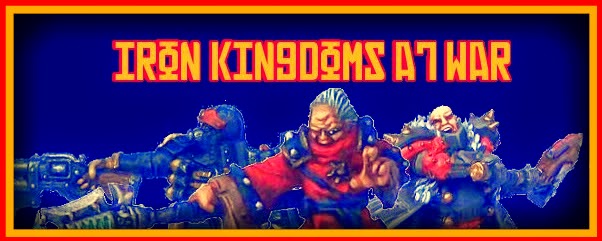1.Vallejo Pumice and Stucco
2.Spackle(filler for those in the U.K.)
3.Green Stuff
4.Milliput
5.Cork
6.Wet Modeling Clay
However, the last few months I have been using Lumina Air Drying Clay which, to me, has become the ideal basing material.
I chose to base my Saga miniatures on Privateer Press 30mm slotted bases rather than the Renedra ones because I wanted a lip around the mini's base that I could paint a slightly different color for each faction so on the gaming table one could quickly tell "who is who". Of course, as with most bases, this brings about a situation where one has to add material to the base to disguise the original plastic base of the mini(the block beneath his feet). Also, as the PP bases are slotted, that has to be covered as well. Please keep in mind, this technique will work with any bases you place your minis on...not just round or slotted ones. Lastly, yes you can do this type of basing detail before priming and painting...I just prefer to do it at the end.
Start by pinching on a very small(and I mean small) bit of clay and working it into a small snake with your fingers...this will do most of the work in sculpting up the base.
Lay the clay around original base of the mini where it meets your new base(my 30mm one in this case) and use your fingers to smooth it out creating a gradual rise from the new base to the miniature's block. If your figures are a little too clumsy or there are some tight spots, use the flat of an x-acto knife blade to flatten out the clay.
Uh oh....my snake didn't cover all of the slot....what do I do? Easy, just roll a little ball of clay to place on that part of the base and...
boom!...no problem!(sounds like an infomerical, sorry). Now here is one of the real advantages of this particular clay(Lumina). In under 10 minutes it is dry enough for me to base my grit(sand/kitty litter) over; with putties and filler I have to wait a lot longer!
After I paint a little Mod Podge(watered down PVA essentially) on the base I dip him in my basing material. In just a matter of minutes(from no clay to fully textured) my figures look like this...
Now I just have to paint up the base texture(for a tutorial head to this post) and the base lips and these four guys can join the rest of their unit...
Let me conclude with all the reasons I love this air drying clay for basing and why it is my new norm for finishing a figure.
1. It is very easy to work with. Unlike two party putty(Green Stuff/Milliput) it is not the least bit tackey so you needn't worry about keeping fingers or sculpting tools wet.
2. It is entirely sculptable. You can carve bricks, patterns, etc. into the clay with such ease! You can do this while it sets or after it dries.
3. It is inexpensive. The block of clay I purchased off Amazon for $10 will last me for hundreds of figures. I used about 1/50th of the block for the four figures shown in the example.
4. The stuff dries like hard plastic...it IS NOT going to flake or chip. It feels like the original plastic of the mini once it dries.
5. It paints well. The Lumina clay, once primed will take hold paint as well as any other plastic.
I assume there are other air drying polymer clays out there that will work as well as the Lumina...if you know of some feel free to post them in the comments section. Here are some other non-Saga figures I have based with the same material...
 |
| Soviet 20mm Plastic Soldier Company Minis |
 |
| 15mm Elves modded for BattleLore boardgame with Lumina Clay bases(the hole to hold the banner was easily made with the clay as well!). |
Well that's it for now...I hope you found this tutorial helpful.
~Gareson









Interesting product - new to me.
ReplyDeleteI'll keep an eye out for it.
Tony
Hey, I'm on a big Saga binge just like you!
ReplyDeleteI ordered up the clay. I've been using another product I'm not happy with so I'm looking foward to the change. Thanks for sharing!
@Monty
ReplyDeleteI am sure you'll be happy with it. Be sure to let me know what you think.
I ordered some up too. I bought some White Pumice, but it sure seems like a goopy mess... =]
ReplyDeleteWaitrog...you just made your life easier...I started with the Punice years ago myself! You guys be sure to come back and tell is how you did with the Lumina. MAKE SURE you seal it up real tight(in the ziplock and plastic wrap) when you are not using it or it will dry out on you. If you are careful...it will stay pliable for you.
ReplyDeleteWhat keeps the lumina attached to the base other than gravity? Do you pit glue under the clay? Love the idea, basing with plaster was always a pain in the rump!
ReplyDeleteGood question. It adheres naturally to most plastic and metal if you apply minimal pressure(as I did simply with my finger or x-acto knife. It seems to adhere to the hard plastics of all types of miniature bases. I once did have it separate from sheet styrene(specifically the elves pictured at the end of the post)...however, this was a non-issue as the clay itself had become a hard base! In have based dozens of figures with the Lumina with no use of glue or adhesive between the clay and the plastic base and there is complete, tight adhesion(after a lot of handling too).
ReplyDeleteSorry....autocorrect...."In"="I" in post above!
ReplyDeleteThanks for the answer, definitely gonna give it a try!
ReplyDelete